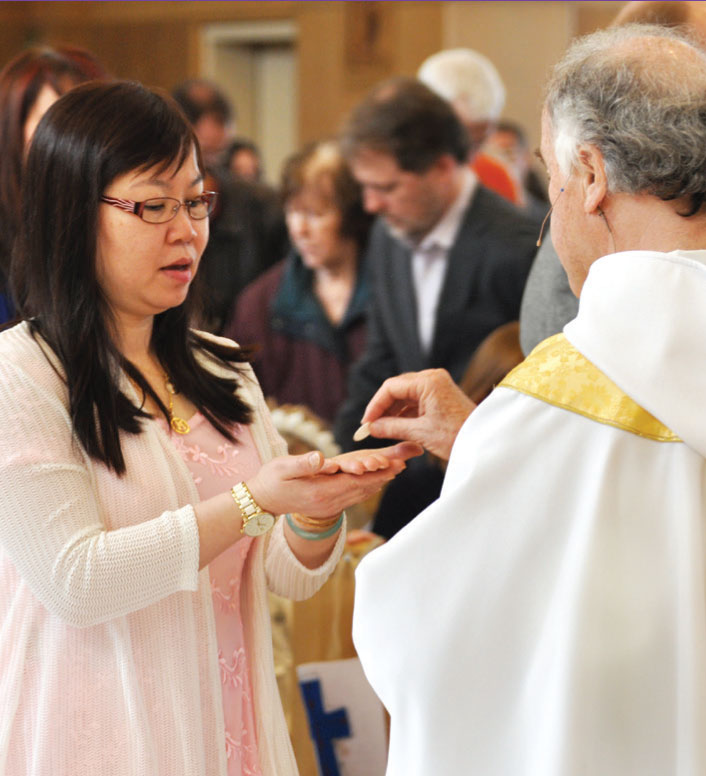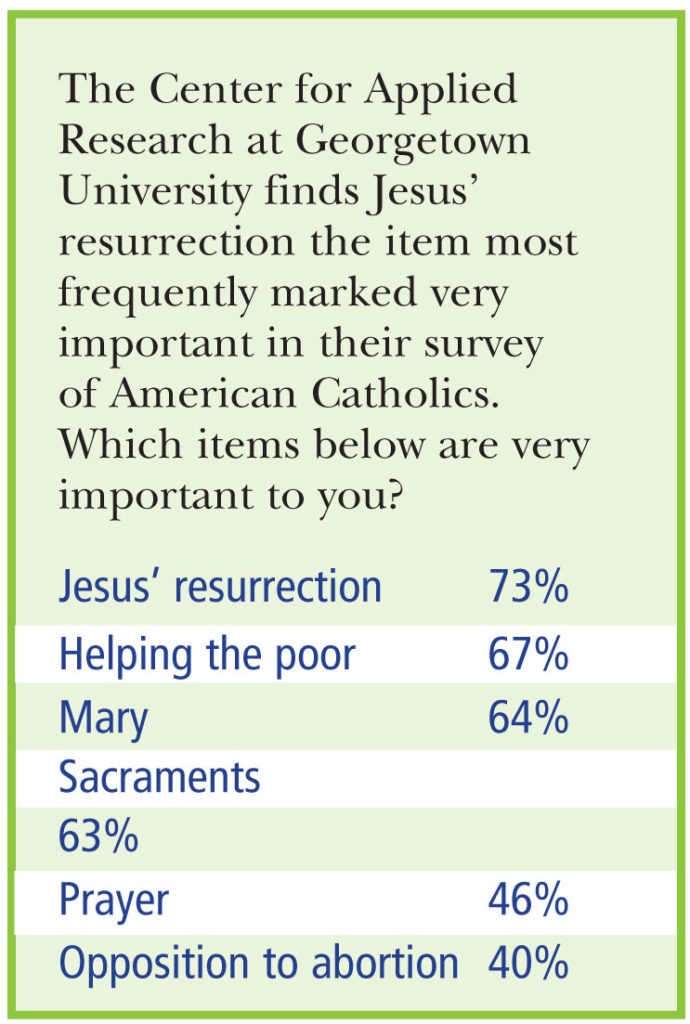
The three Easter stories in Luke 24 build toward the verses we read this Sunday, in which the risen Jesus appears to the whole company of his disciples. In each story disciples are remembering Jesus’ teaching and reinterpreting the apparent failure of his crucifixion in light of the unfolding news of his resurrection. A lot happens between dawn and evening the first Easter.
In Luke’s first Easter story, Jesus’ women disciples Mary Magdalene, Joanna, Mary the mother of James, and other women go to the tomb early on the first day of the week with spices to anoint Jesus’ dead body properly. They find the stone at the door of the tomb rolled back and the tomb empty. Two men appear and invite them to remember that Jesus told them he would be handed over to sinners, crucified, and on the third day rise (24.6).
The women do indeed remember Jesus’ words, which shows that Jesus taught them along with the men disciples. The women rush to tell the eleven and the rest of Jesus’ disciples, but the apostles regard the women’s witness as “an idle tale” (24.11).
Luke’s second Easter story focuses on two disciples walking home to the village of Emmaus. They are remembering and talking over all that happened to Jesus. When a stranger asks what they are talking about, the two tell how Jesus was delivered up and crucified, how they hoped he would redeem Israel, how the women’s report amazed them.
The two disciples don’t recognize the stranger is the risen Jesus, accompanying them. The stranger calls them foolish and slow of heart, remembering and reinterpreting for them what the prophets say about the messiah. “Was it not necessary that the messiah should suffer these things to enter into his glory?” the stranger asks.
In this story Luke reflects the experience of the Christian community after Jesus’ resurrection. As Jesus’ followers continue to use Israel’s scriptures in worship, they hear them in a new light. Jesus fulfills the scriptures in ways they do not expect. Jesus is the stone the builders reject that becomes the cornerstone (Psalm 118.2). Jesus is the suffering servant in the prophetic poetry of Second Isaiah (Isaiah 53).
Not until Jesus blesses and breaks bread with them do the two disciples recognize him. Then they remember how their hearts burned within as they listened to the stranger on the road. The process of remembering and trying to understand events stirs their deepest hopes to new life. We continue this process each time we wrestle with the meaning of the scriptures for ourselves.
- What do you most often remember about what Jesus taught?
- Where do you go with your questions about God? With whom do you reflect?
Luke’s third Easter story is Sunday’s gospel. It begins with the two disciples reporting their encounter with Jesus. The whole company of Jesus’ followers has assembled. The Eleven are there, including the amazed Peter, who went to see the tomb for himself after Mary Magdalene, Joanna, and Mary the mother of James reported their experience. The women are there, their report no longer an idle tale. In the midst of sharing their experience, the risen Jesus appears, greeting the community with peace and stretching their capacity to take in his presence.
In this scene this larger company sees Jesus’ wounded hands and feet, watches him eat, and hears him explain his teaching that he must fulfill the scripture. He calls them to be his witnesses. He invites them to touch his body with its wounds. He eats fish. Both actions show the risen Jesus is also the human Jesus.
After he eats, Jesus again reinterprets scripture as he did for the two on the road to Emmaus. Jesus insists, “All the things written about me in the law of Moses, the prophets, and psalms must be fulfilled” (24.44).

Two verses later Jesus affirms a third time the order and divine plan Luke wants us to see fulfilled in the events of Jesus’ life. “Thus it was written and so it happened that the Messiah is to suffer and rise from the dead on the third day” (24.46).
Christians still keep Sunday by gathering, remembering Jesus, interpreting events in our world in the light of scripture, and breaking bread together as he asked. In small Christian communities Christians gather to interpret their lives and events in the world in the light of scripture.
- What touches you most in these appearances of Jesus risen?
- When have you found Jesus alive in the midst of the Christian community with whom you open the scriptures and break bread?
- How Easter centered is the story that you tell about Jesus?
